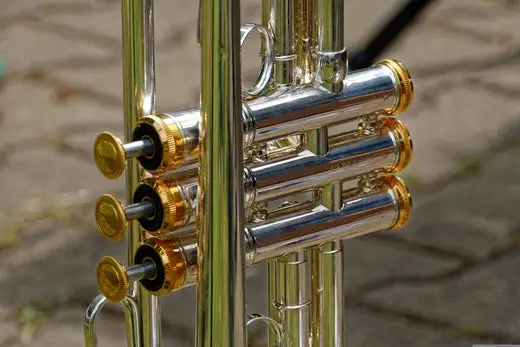Student Feature: Mastering the Five Core Elements for Musical Success
Preparing for a music school audition or a professional job interview can indeed feel like a scene from a gripping movie, filled with tension and anticipation. Yet, breaking down the process reveals that success hinges on mastering some fundamental skills. Here’s a breakdown of those essential elements:
- Sound: Achieving a high-quality musical sound involves understanding adjectives like resonant, focused, bright, or warm. Resonance, particularly on brass instruments, requires a relaxed embouchure for freer vibration and fuller sound with less effort. Strengthening your embouchure over time enhances sound quality significantly. Utilize exercises like long tones to train correct breathing, steady airflow, and lip position.
- Intonation: Perfectly centered notes are crucial for good intonation. Regular use of a tuner helps maintain accuracy. Ensure a proper balance of air and embouchure tension; otherwise, achieving consistent intonation becomes challenging. If struggling with a particular melody, singing it with a tuner or piano can help correct any inaccuracies in your internal musical model.
As an advanced player, harmonizing with others requires adjusting notes slightly to match the surrounding harmony. This involves relying on your ear rather than a tuner, as you’ll need to adapt to the specific context of the music.
In essence, mastering these five elements—Sound, Intonation, Articulation, Rhythm, and Style—can greatly enhance your chances of success in auditions or professional performances. With diligent practice and attention to detail, you can navigate the challenges and emerge as a confident and skilled musician.
| Interval | Example | Adjust Higher Note (in Cents) |
| Minor Third | C to Eb | +16 |
| Major Third | C to E | –14 |
| Perfect Fourth | C to F | -2 |
| Perfect Fifth | C to G | +2 |
| Minor Sixth | C to Ab | +16 |
| Major Sixth | C to A | -16 |
3. Articulation
Articulations lend definition and character to the piece you’re playing. They must be intentional, clear, accurate, and well-suited to the given passage. Your listeners shouldn’t wonder if your notes were legato or staccato!
To refine your articulation, practice Clarke’s Technical Studies using the same articulation for an entire exercise at a time – whether that is legato, marcato, staccato, or accented. Be sure the tongue always hits the same place to give the exact same sound to each note. Slow, diligent practice will enable you to hear what exactly you need. Listen carefully to what you are doing; when you can hear your own inaccuracies, you can fix them easily. To attain the highest rank as trumpeter, you will need flawlessly consistent articulation.
4. Rhythm
Rhythmic irregularities are just as noticeable as out-of-tune notes! When performing, perfect rhythm is a must.
Make sure you understand the rhythm – how it lines up with both the beat, as well as how it is subdivided within the beat. This may require intellectual effort! Take the time to sit down and do the math. Mark with a pencil where the beats fall; then turn on the metronome and speak the rhythm out loud, making sure that the clicks you hear occur in the same places as the ones you’ve marked. Next, play the rhythm on the trumpet with the metronome, but on a single note. Finally, add the correct notes.
Work daily with the metronome to keep your tempo steady and help clarify your understanding of the rhythm. While it’s useful to train yourself to keep the beat with your feet or toes (this requires feeling the beat internally), there is also no substitute for the unerring accuracy of a metronome. To get the best of both worlds, it’s a good exercise to play the passage while tapping your foot, with the metronome on.
If you don’t already own a metronome, you can either get a stand-alone device or buy an app for your smartphone or tablet. Whichever you buy, be sure it can play subdivisions of the beat, especially for complex passages. Once you can play accurately with the beat subdivisions, then you are ready to work with larger beats.
As a side note, make sure you practice with a pencil at the ready! Your music is for study and active engagement, not hanging in your living room. Effective markings allow you to not waste your chops playing the same passage wrong over and over again. Be specific, concise and legible, so that tomorrow you don’t have to figure out the same problems all over again!
5. Style
Often students play with one style – loud and fast! Once in a while that sets the perfect mood, but unless your name is Tim Morrison, it’s possible that there are some nuances you’re missing. As you begin to explore this aspect of your playing, there are three main areas you should consider: the composer’s intentions; historical period; and mood.
a. The composer’s intentions
Look at the tempo marking in the music, dynamics, and any other markings. Research what each marking means. Is it a fanfare, ballad, march, lament? Listen to recordings of your piece, as well as other works by the same composer, to learn the composer’s sound and style. Learn to match your own playing to the recording. For contemporary pieces, you may need to contact the composer directly to obtain a recording of the piece.
If you are an advanced player, it may be illuminating to listen to recordings of many works by the composer of your new solo, excluding recordings of your actual piece (at least for a few weeks). This will allow you to flex your creative muscles in forming your unique interpretation.
b. Historical Period
From the Middle Ages to the Renaissance, Baroque to Classical, Romantic to 20th Century, each period of music has its own palette of sounds. Find out a little bit about the composer and historical period of each piece you begin.
For example, say you just got the music to Telemann’s Trumpet Concerto in D. You discover that the piece is Baroque, which means that its emotional qualities should be expressed tastefully and in moderation. You focus on clean, clear articulations and distinct contrasts between loud and soft. Once you can play the notes accurately, you add musical ornaments such as mordents, trills, and appoggiaturas.
After finishing the Telemann, your teacher assigns you the Hindemith Trumpet Sonata. You consult your musical dictionary and discover that a sonata is essentially a duet between the piano and trumpet. You begin to familiarize yourself with both parts and how they fit together.
In talking to your teacher, you learn that Hindemith wrote the piece in response to the genocide in Europe during the first world war. You seek ways to express the darker qualities of the piece through your dynamics, vibrato, and tempo.
c. Mood
When a composer writes p or f in the music, it is up to you to discover what mood they may have in mind. Soft dynamics may convey mystery, suspense, or tenderness – all very different things! Loud dynamics may convey passion, joy, excitement, or anger … choosing which of those is up to you.
Listen to a recording a few times. Is there one feeling that characterizes the whole piece, or are there various moods? Above each phrase in your music, write your ideas about what the phrase is saying.
To express the mood, you may use sharp articulations to convey anger; dynamic swells and vibrato to convey passion and emotionality. As you gain intensity, you may allow the tempo to surge forward – or you may deliberately keep a steady tempo to convey a sense of inevitability and impending doom.
The speed and intensity of your vibrato will reflect the mood as well as the historical period. You may vibrate more freely in romantic music than in Baroque pieces, where vibrato is used only occasionally as an ornament.
Using the Fundamentals for Success
A long-legged freshman with a dream of being the next Wynton Marsalis, Chris practiced whatever came easily. He had a vague idea that somehow he would somehow become a great trumpeter; but in reality, his technical mastery was stalled out somewhere around Barracuda Blues.
Chris and I re-structured his practice around the five core elements, working through a tall stack of method books over the next few years – the usual suspects (Arban, Bordogni, Brandt, Clarke, Schlossberg, Stamp) as well as lesser-known ones (Brandt, Goldman, Irons, Bai, and Sachse). Each exercise was chosen to develop one of the five elements.
In fall of his senior year, Chris was almost unrecognizable compared to the kid I’d met four years before. Flying across the country for his Juilliard audition, he opened his Haydn Trumpet Concerto in Eb on the plane and mentally played through the piece, his concentration unbroken by the activity of travelers around him.
When the owl flew through his window a few weeks later, it was an acceptance letter from Juilliard.
It takes very little discipline to practice the things you enjoy, or to engage in “emergency practicing” for an upcoming audition. It takes a great deal of intellectual effort and self-mastery to systematically design your practices around the five core elements of playing. Consistent, structured study will give you mastery over your instrument and long-term success in trumpet … or whatever your chosen career may be!







